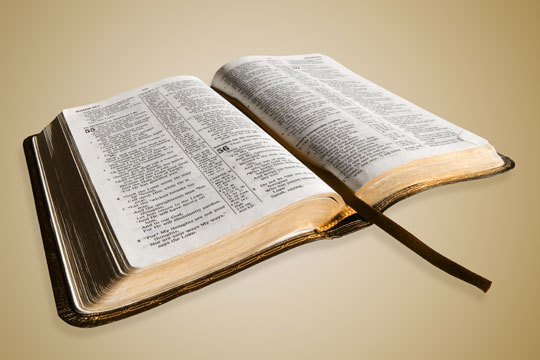This is the third article in a series about forming children for active participation in the Mass.

To help children listen well to the Word of God at Mass, catechists should provide experiences of Scripture that allow young people to respect the Word, to become aware that Jesus speaks to them through it, and to engage in holy listening.*
Respect for the Word
From early childhood, students should learn that a reading from the Bible is something special and that they should listen with respect. Catechists can emphasize rituals such as enthroning the Bible or Bible storybook, handling it reverently, and using gestures and words we say at Mass: “A reading from the Book/Gospel of…” and, “The Word/Gospel of the Lord.” There should be silence before and after the reading.
When teaching children about the parish church, the sacredness of the ambo as the place for the reading of the Word should be emphasized, so that children know when the reader approaches it, it is time to listen in a special way. Likewise, when teaching about the structure of the Mass, the Liturgy of the Word should be treated as a special time to listen.
Jesus Speaks Through Scripture
By using guided meditation and prayer with Scripture, catechists can engage children’s minds and imaginations to hear Jesus. Prayerful listening requires children’s full attention and trains them to encounter Jesus and hear him speak to them directly through the Bible stories.
A non-scriptural resource to begin an imaginative journey to Jesus with the very young is The Ball of Red String. A sample guided reflection, “Called to Holiness,” can be found here at Catechist’s Journey. With older students, catechists can also use the 3-Minute Retreats to encourage praying with Scripture.
Holy Listening
The Introduction to the Lectionary for Mass says, “When God communicates his word, he expects a response, one that is, of listening and adoring ‘in Spirit and in truth’ (John 4:23). The Holy Spirit makes that response effective, so that what is heard in the celebration of the Liturgy may be carried out in a way of life…” (6) The participation of the people, it says, increases according to how deeply they listen and try to live the Word.
Lectio Divina, an ancient four-step process of praying with Scripture, can help students practice hearing what God is saying to them through Scripture. Some add a fifth step, action, and that can help students make a decision to live what they have heard. Some catechists ask older students to write in a journal after Lectio Divina.
If these strategies are a regular part of faith formation, students will be much more likely to listen and better equipped for their role as hearers of the Word at Mass.
*Based on the Introduction to the Lectionary for Mass, 45–47.
Read the first two articles in the series:
Forming Children and Youth for the Mass, Part 1: Silence and Reverence
Forming Children and Youth for the Mass, Part 2: Song and Praise





Loving this series, Joyce — thank you!